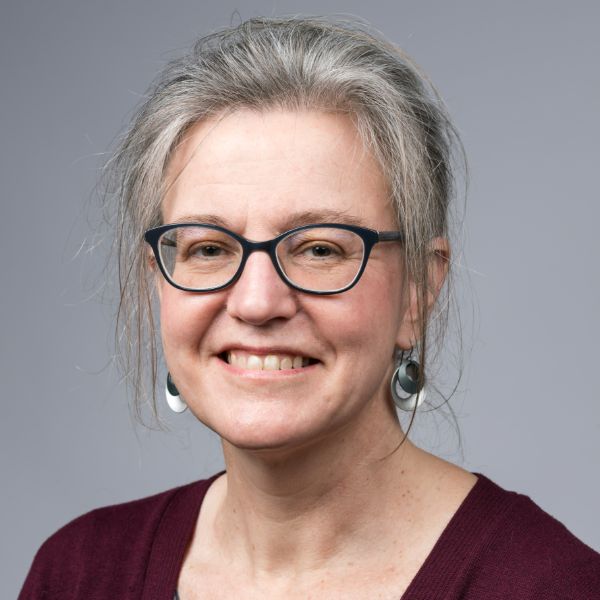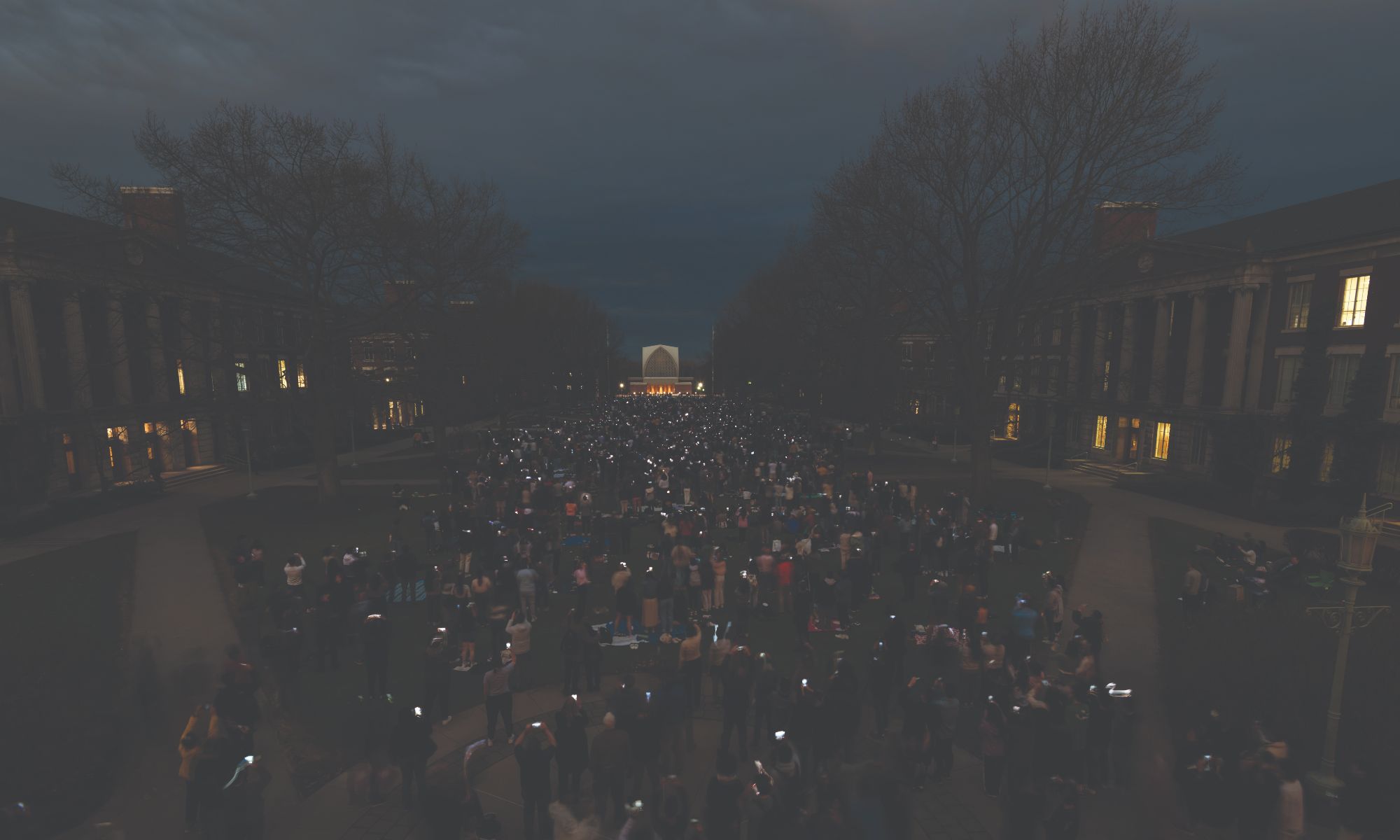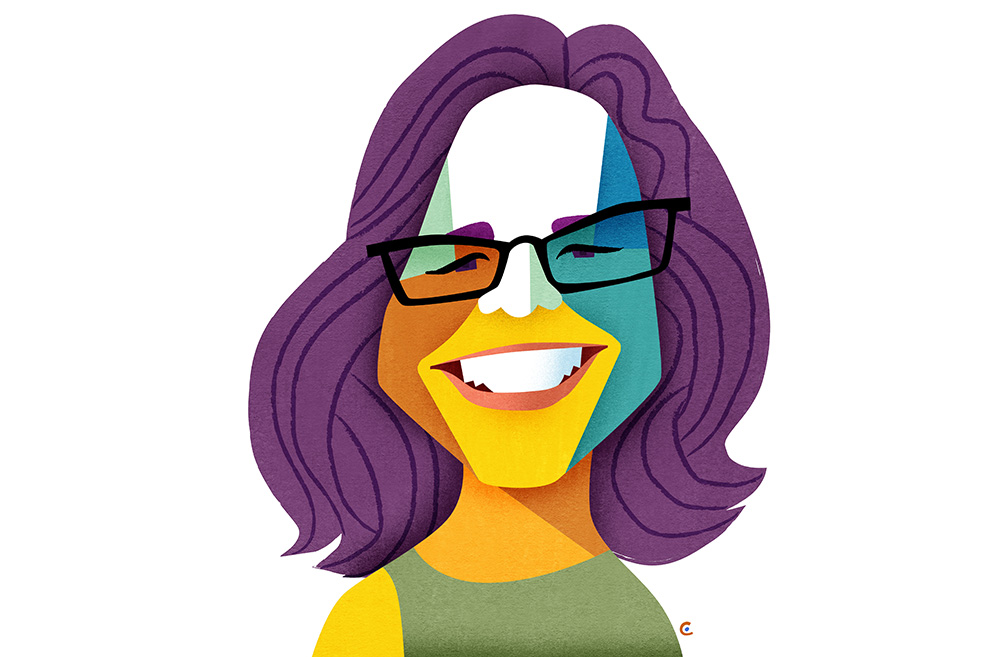A new Medical Center department teams up with the Humanities Center to foster collaboration on both sides of Elmwood Avenue.
A little over a year ago, Lainie Ross, Dean’s Professor and chair of the Medical Center’s Department of Health Humanities and Bioethics, crossed Elmwood Avenue and walked into Rush Rhees Library to pay a visit to Peter Christensen, the Ani and Mark Gabrellian Director of the Humanities Center.
Ross, a pediatrician and an ethicist with a PhD in philosophy, had arrived in Rochester just months earlier from the University of Chicago’s McLean Center for Medical Ethics. The Department of Health Humanities and Bioethics was brand new, and she had been hired to shape and lead it, along with the Paul M. Schyve, MD Center for Bioethics. Christensen, a scholar of architectural and urban design and the Arthur Satz Professor of the Humanities, was halfway through his first year heading the Humanities Center, and only its second director. Finding their footing in new roles, they each sought inspiration and a potential partner in elevating the profile and practice of the humanities across the University.
It was a fruitful meeting.
“We had a kind of immediate synergy,” says Christensen, who since January also serves as associate dean of the School of Arts & Sciences. “I was taken by her incredible initiative.”
Says Ross, “We met, and within five minutes, it was like we were old friends.”
They traded notes on everything from their shared roots as New Yorkers to their thoughts on the academic literature on hospital design. They found they harbored similar views about the relationship between the humanities and the life sciences.
Viewed through the modern academy’s operational lens, with its divisions into departments and programs, the humanities and the life sciences can seem to occupy separate universes. But seen in terms of the problems they address, they can be inseparable.
Ross describes the humanities as “embedded” in medical research and practice. And nowhere has that been more the case than at Rochester.
Elected to the National Academy of Medicine last year, Ross has written and presented internationally on ethical issues raised by organ transplantation, genetics and genomics, clinical research with human subjects, and multiple aspects of pediatrics. After three decades at Chicago, she’d grown frustrated.
“They had a very narrow role for ethics as just clinical ethics at the bedside,” she says of the school’s medical establishment. “I wanted [to see] a much broader, 360-degree role.”
She calls the opportunity that arose at Rochester “the perfect job,” and shares an oft-told story that’s still not widely known outside the University. In short, the School of Medicine and Dentistry was the birthplace of an influential approach to patient care and research called the biopsychosocial model.
With roots stretching back to the 1940s, the model was formally proposed and described by Medical Center psychiatrist George Engel in a landmark article, “The Need for a New Medical Model: A Challenge for Biomedicine” published in the journal Science in 1977.
The deceptively simple model transformed medical education. As Engel explained, a physician should not be trained to look exclusively at physiology as though a patient was best seen as a system of organs. “The physician’s basic professional knowledge and skills must span the social, psychological and biological, for his decisions and actions on the patient’s behalf involve all three,” he wrote, at a time when physicians were still overwhelmingly male.
The biopsychosocial model opened a door to collaboration between researchers in medical science and other disciplines, including the humanities. In 1981, the Medical Center established a Division of Medical Humanities, and Ross credits its first director, Kathryn Montgomery, a scholar of English literature, with a groundbreaking development. Montgomery’s book Doctors’ Stories: The Narrative Structure of Medical Knowledge (Princeton University Press, 1991) “is sort of the precursor to all of narrative medicine,” Ross says, alluding to a type of medical practice that considers the role of storytelling—the patient’s, the doctor’s, and the interaction between the two that creates yet another narrative that guides clinical decision making.
Under the leadership of its last director, physician and art historian Stephanie Brown Clark, the division expanded into the arts, partnering with the University’s Memorial Art Gallery, and more recently, with the Eastman School of Music.
As Ross puts it, the Medical Center “was among the first in the country with a humanities division, and now, is one of just eight academic medical centers in the nation to have a dedicated humanities and bioethics department.”
The decision to elevate a division into a department is no mere administrative detail. It has allowed Ross the chance to develop that “360-degree role” for ethics in a way she couldn’t at Chicago. She calls Mark Taubman, the CEO of the Medical Center and dean of the medical school until he stepped down this past year to resume his position in cardiology, “visionary” in making the critical decision.
“One of the most important things I do is what I call embedding,” Ross says. Health humanities and bioethics “have to be embedded across the entire clinical and research spectrum.”
That means standing on an equal footing with clinical departments.
“If you’re doing a lecture on neurology, I want to be included, because I’ll talk about determinations of death and the ethical issues [that presents],” she says. “If you’re talking about cardiology, I’m going to talk about the ethics and humanity of what it means to get somebody else’s heart in a heart transplant. No matter what area of medicine you talk about, I can come up with an ethical issue. And if I can’t, I can just go back to the fundamental doctor-patient relationship, because that’s a moral relationship.”
By addressing the ethical implications of medical research and practice, she has been able to bring additional grant funding to Medical Center researchers. “When you write a grant, you have to be innovative,” she says. “By bringing in an ethics component, we’re saying, ‘we’re doing great science, but what are its implications?’ ”
But Ross didn’t want such embedding to be limited to ethical philosophy or to the Medical Center. That’s why, she says, “I reached over to Peter.”
When Christensen met Ross, he was about a semester into his role leading the Humanities Center. He was at a busy and productive point in his career. A specialist in architecture and urban design, his second book, Precious Metal: German Steel, Modernity, and Ecology (Penn State University Press, 2022), had just come out, and another, Prior Art: Patents and the Nature of Invention in Architecture (MIT Press, 2024), was at press.
The Humanities Center was established in 2015, and its inaugural director, Joan Shelley Rubin, the Dexter Perkins Professor of History, articulated a set of values as part of its mission, describing them as “some of the gifts the humanities provide: deeper understanding of ourselves and others, along with the sense of collective welfare essential for democracy to thrive.” Under her leadership, the center brought in new scholars as fellows, created forums for scholars across disciplines to share perspectives, and sponsored a faculty-led, reading-and-discussion summer program called Experiencing Civic Life for select high school students in the Rochester City School District, among other programs and initiatives.
From that footing, Christensen’s charge was to expand the center’s role. New initiatives launched in the past year include the Scholar in Exile program and a global book series, Humanities in the World, in cooperation with the University of Rochester Press.
And he’s asked, what more could the humanities be doing—literally? He points to an assumption about the humanities with deep roots, but one that he believes needs rethinking.
In Western culture at least, starting with the 18th-century Enlightenment period, the humanities came to be thought of as the study of “what defines the human experience,” he says. “And that is why music is a humanity, but it’s also why literature is, and why art is, and why philosophy is. These are all things that only we can do, right? That animals and nature can’t do. This is what defines us as a species and what defines the human experience.”
That was still the idea at the dawn of the 20th century. But within the rapidly growing academy, Christensen says, “it became associated with thinking versus doing. We actually need to think also about what the humanities can do.”
In that vein, Ross’s arrival could not have come at a better time. Medicine is fundamentally about doing—caring, healing, and improving the quality of life in the most elemental sense. Christensen had already been interested in connecting with colleagues in medicine for that very reason. Ross was someone who saw a humanistic discipline—ethical philosophy—as part of every aspect of clinical care and research.
During that first meeting, Christensen disclosed to Ross something that had been weighing on his mind.
“A dear friend of mine had just been diagnosed with a stage 3 brain tumor at the age of 40,” he says. “I was really struggling with all that that meant about dying young, or potentially dying young, and about your life being turned upside down.”
Ross recalls that point in the conversation well. “I said, ‘You know, what you’re experiencing is anticipatory grief. We talk about this all the time in medicine.’ ” Their conversation turned to the universality of grief. And by the time the meeting was over, they had a plan for their first collaboration.
They called it, simply, the grief series. Through the 2023–24 academic year, Ross and Christensen have brought before the University authors, musicologists, poets, physicians, and photographers to discuss grief over sudden loss; the connection between music and mourning; a doctor’s experience declaring a child dead; grief in the face of violence and social injustice as experienced in Black communities, and more. The series invited faculty, students, and staff “to expand our networks exploring this complex topic as one university.”
Susan Dodge-Peters Daiss, a senior associate in the Department of Health Humanities and Bioethics, calls the series “a daring first move” in what promises to be a vibrant collaboration between the department and the center, extending to other areas of the University over time.
Daiss was the inaugural McPherson Director of Education at the University’s Memorial Art Gallery and trained as a hospital chaplain at Strong Memorial Hospital. In 2002, she and Clark cocreated a course using art as a means for medical students and clinicians to enhance their skills of observation. More recently, she created Art at the Bedside, offering patients a chance to look at works of art as a means to reduce anxiety and fear. She recalls “sitting beside a woman who was dying, who would never be outside again. And we went on walks in the woods together, thanks to artwork.”
“This is an important collaboration,” Daiss says. In choosing a theme with universal relevance, “we’re showing that whether you’re a historian, a political scientist, a psychologist, a musician, or a clinician, we can all share ideas.”
But there is a method at work when it comes to turning ideas into action. Ultimately, the hope is that the collaboration will lead to new research. But that takes time, says Ross, who has a philosophy about how research germinates. “You can’t get to research until you have relationships,” she says. “The first step of trying to do research that spans the Medical Center and the River Campus is to develop relationships.”
Relationships, perhaps, like the one that has arisen between her and Christensen.
Like old friends and colleagues, Christensen and Ross don’t always agree, and their back-and-forth can help refine their thinking. Christensen observes that in the contemporary United States, there’s a stigma against expressing grief, yet none against expressing anger. As a result, people may “bypass grief and express it as anger.”
He asks Ross what she thinks, and she replies, “Well, sort of.”
“I’m going to go all Kübler-Ross on you,” she says to him, referring to the University of Chicago professor Elisabeth Kübler-Ross who identified and articulated five stages of grief: denial, anger, bargaining, depression, and acceptance. “We’re sort of stuck in our anger stage, rather than going through the five stages. And you don’t have to go through the five stages in order. Grief encompasses a lot of different emotions, not just one.” When grief gets expressed communally, there can be real beauty in that experience, says Ross.
Later in their conversation, Christensen returns to that thought. “It reminds me a bit of the art historical concept of the sublime,” he says. He offers “a nutshell version” of the concept as described by the 18th-century German philosopher Immanuel Kant: “a mix of awe and fear and beauty that you experience when looking over the top of a mountain, for example. It’s not about positive or negative emotions but about profundity of emotions.”
Ross and Christensen report hearing from colleagues and people in the community inspired by the grief series to converse and connect with others. In that spirit, the scholars are exploring the next joint venture for the department and the center.
“I think Lainie and I have some fun topics that we want to deal with,” says Christensen. “Our lives have joy, right? Joy, being the opposite of grief—maybe we want to get there at some point.”
This story originally appeared in the spring 2024 issue of Rochester Review, the magazine of the University of Rochester.




